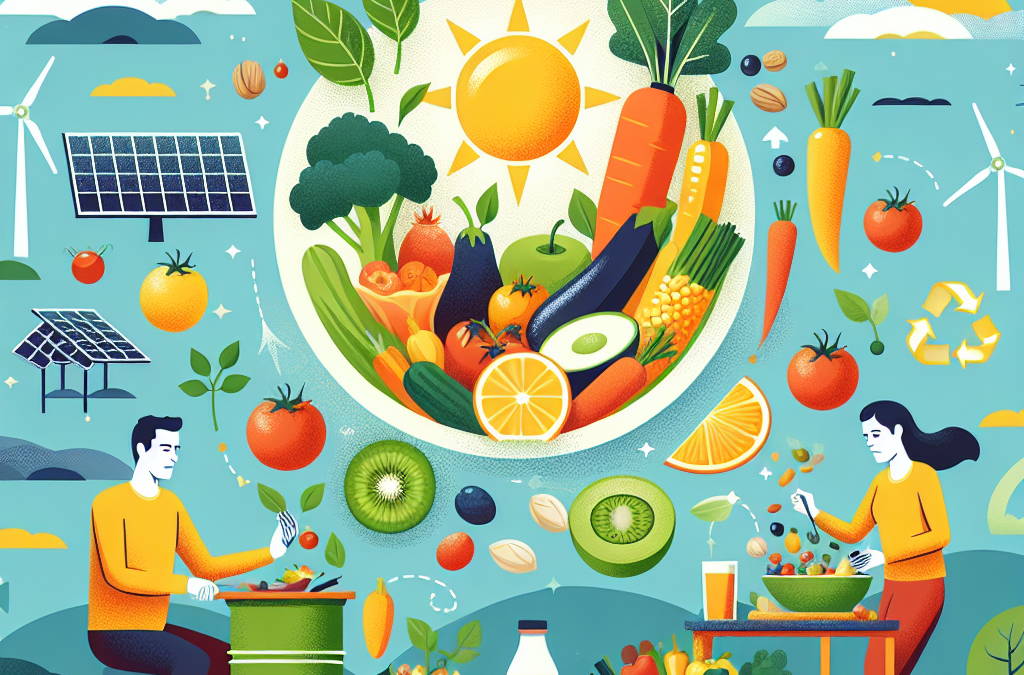- 1. Organic Dark Leafy Greens
- 2. Organic Quinoa and Ancient Grains
- 3. Organic Berries
- 4. Organic Nuts and Seeds
- 5. Organic Root Vegetables
- 6. Organic Legumes
- 7. Organic Mushrooms
- 8. Organic Fruits
- 9. Organic Herbs and Spices
- 10. Organic Oils
1. Organic Dark Leafy Greens
Nutrition Powerhouses Packed with Vitamins
Organic dark leafy greens such as kale, spinach, and Swiss chard are essential components of a healthy diet in 2025. They are rich sources of vitamins A, C, K, and numerous antioxidants that support immune health and reduce inflammation. Choosing organic ensures you’re avoiding pesticides and chemicals, which is increasingly important as research links pesticide exposure to adverse health effects.
These greens are also high in dietary fiber, which aids digestion and promotes gut health. Incorporating organic greens into your daily mealsâwhether in salads, smoothies, or sautéed dishesâcan significantly boost your nutrient intake.
According to recent studies, consuming at least 1-2 cups of dark leafy greens daily can lower the risk of chronic diseases such as heart disease and diabetes. For 2025, prioritizing organic options ensures you’re getting cleaner, more nutrient-dense greens.
Practical Tips for Incorporating Organic Greens
Start your day with a spinach or kale smoothieâadd some fruit and a handful of seeds for a nourishing breakfast. Use organic greens as a base for salads or as a quick side dish sautéed with garlic and olive oil. When shopping, look for vibrant, fresh leaves with no yellowing or wilting to get the best quality.
Buying local organic greens from farmers’ markets can also ensure freshness and support sustainable practices. Remember, the fresher the greens, the more nutrients you’ll get. In 2025, growing your own organic greens in a small garden or balcony is an excellent way to guarantee their purity.
2. Organic Quinoa and Ancient Grains
Healthy Carbohydrate Sources for Modern Diets
Organic quinoa, amaranth, millet, and other ancient grains have gained popularity in 2025 as wholesome alternatives to refined grains. These grains are naturally gluten-free, high in fiber, and packed with essential amino acids, making them excellent for vegetarian and vegan diets.
Using organic grains prevents exposure to pesticides and additives, which is a priority for health-conscious consumers. They provide sustained energy, stabilize blood sugar levels, and support gut health through their fiber content.
Incorporate organic quinoa into salads, grain bowls, or breakfast porridges to diversify your diet. Many restaurants and meal plans in 2025 now emphasize organic grains as part of sustainable eating habits.
Cooking and Storage Tips for Organic Grains
Rinsing organic quinoa thoroughly before cooking removes natural saponins that can give an unpleasant bitter taste. Store your organic grains in airtight containers in a cool, dry place to maintain freshness. Cooking times varyâquinoa takes about 15 minutes, while millet can take around 20 minutes.
Experiment with flavored organic grains by adding herbs, spices, or broth during cooking. They serve as nutritious bases for various dishes, helping you replace processed carbs with nourishing, organic whole foods.
3. Organic Berries
Antioxidant-Rich Superfoods for 2025
Organic berries, including blueberries, strawberries, raspberries, and blackberries, are among the most potent organic whole foods for health. They are rich in antioxidants, particularly anthocyanins, which fight oxidative stress and may boost brain health.
Studies released in 2025 indicate that organic berries contain higher levels of vitamin C and polyphenols compared to conventionally grown varieties. Eating a handful of organic berries daily can improve skin health, support the immune system, and reduce inflammation.
Convenient to incorporate into your diet, berries make great toppings for yogurt, oatmeal, or smoothies, and are also delicious on their own. Buying organic ensures you’re avoiding exposure to harmful pesticides often used on berries grown conventionally.
Tips for Buying and Storing Organic Berries
Choose ripe, vibrant berries with no visible mold or damage. To extend freshness, wash berries gently in a vinegar solution to remove residues, then dry thoroughly before storing in the refrigerator. Consume within a few days for maximum freshness.
Consider freezing organic berries for year-round enjoyment and use them in smoothies, sauces, or baking. Remember, in 2025, supporting organic berry growers helps promote sustainable farming practices and healthier food systems.
4. Organic Nuts and Seeds
Healthy Fats and Protein for Optimal Wellness
Organic nuts such as almonds, walnuts, and cashews, along with seeds like chia, flax, and sunflower, are fantastic sources of healthy fats, protein, and essential micronutrients. They support brain health, hormone production, and heart health.
In 2025, the demand for organic nuts and seeds continues to grow due to their health benefits and sustainability. Organic varieties tend to have higher omega-3 levels and fewer contaminants, making them a superior choice for conscious consumers.
Add these nutrient-dense organic whole foods into your daily snacks, smoothies, or as toppings for salads and yogurt bowls. Small changes like these can significantly improve your intake of vital nutrients.
Storage and Usage Tips for Organic Nuts and Seeds
Store nuts and seeds in airtight containers in a cool, dark place to prevent rancidity. Roasting lightly enhances flavor, but avoid excess heat to preserve nutrients. Grounded seeds like flax or chia are excellent for boosting fiber and omega-3s in meals.
Always opt for organic because it reduces pesticide exposure and supports sustainable farming. Incorporate a handful of nuts or seeds into your diet every day in 2025 for maximum health benefits.
5. Organic Root Vegetables
Nutritious and Versatile Organic Whole Foods
Organic carrots, beets, sweet potatoes, and parsnips are flavorful, nutrient-dense organic whole foods that have a prominent place in balanced diets for 2025. They are rich in vitamins, minerals, and fiber, and contain natural antioxidants that support immunity and vitality.
Growing organic root vegetables minimizes chemical residues, ensuring cleaner produce. Their natural sweetness makes them versatile for roasting, soups, stews, or raw preparations.
Incorporating organic root vegetables into your weekly meals can help you achieve a more nutrient-rich diet. Many farms now prioritize organic practices to meet rising consumer demand for clean, wholesome foods.
Cooking Tips for Organic Root Vegetables
Peel and chop organic root vegetables evenly to ensure uniform cooking. Roasting brings out their natural sweetness, while steaming preserves nutrients better than boiling. Use organic oils and herbs for added flavor.
Store organic root vegetables in a cool, dark, and ventilated area to prolong freshness. Experiment with different recipes, from purees to salads, to enjoy these organic whole foods’s full nutritional potential.
6. Organic Legumes
Plant-Based Protein and Fiber-rich Organic Whole Foods
Organic lentils, chickpeas, mung beans, and kidney beans are excellent sources of plant-based protein, fiber, and micronutrients. They are staples for sustainable eating in 2025, supporting both health and the environment.
Research shows that consuming organic legumes can improve digestion and regulate blood sugar levels. Organic practices reduce chemical residues, making these legumes safer and more nutritious.
Incorporate organic legumes into soups, salads, and main dishes to enhance satiety and nutrition. Soaking and cooking them properly is key to reducing antinutrients and maximizing benefits.
Huge Discount on the Best Certified Organic Whole Food Supplement!
Preparation and Storage Tips
Rinse organic legumes thoroughly, then soak overnight to reduce cooking time and improve digestibility. Store dried organic legumes in a cool, dry place for long-term use. Cook them until tender for optimal nutrient absorption.
In 2025, choosing organic legumes supports eco-friendly agriculture and delivers cleaner, healthier plant-based protein options for your meals.
7. Organic Mushrooms
Nutritious and Unique Organic Whole Foods
Organic mushrooms like shiitake, maitake, and portobello are known for their immune-boosting properties and rich umami flavor. They are sources of antioxidants, beta-glucans, and vitamin D, making them potent natural medicines.
In 2025, organic mushroom cultivation is emphasized as a way to avoid pesticide residue. They promote gut health and can help regulate blood sugar and cholesterol levels when included regularly in your diet.
Use organic mushrooms in stir-fries, soups, salads, or grilled dishes. They are a versatile addition to a healthy, balanced diet for organic whole foods enthusiasts.
Cooking and Selection Tips
Select firm, dry, and blemish-free organic mushrooms. Clean them gently with a damp cloth; avoid soaking to preserve their texture. Cooking mushrooms enhances their flavor and bioavailability of nutrients.
Grow your own organic mushrooms at home or purchase from reputable sources to ensure quality. They are excellent, nutrient-packed organic whole foods to include in 2025’s sustainable diet plan.
8. Organic Fruits
Fresh, Juicy, and Pesticide-Free
Organic apples, oranges, peaches, and other fruits are essential components of a healthy diet in 2025. They provide vital vitamins, minerals, and hydration along with antioxidant compounds that support overall wellness.
Choosing organic fruits reduces pesticide intake and supports ecological farming practices. Consumer reports in 2025 suggest that organic fruits contain higher nutrient densities than conventional options.
Enjoy a variety of organic fruits dailyâfresh, dried, or frozenâto maximize health benefits. Theyâre also a great way to satisfy sweet cravings naturally and healthfully.
Buying and Storage Advice
Inspect fruits for ripeness, firmness, and absence of blemishes. Store organic fruits in the refrigerator or in a cool, dark place depending on the type. Wash thoroughly before eating to remove residues.
Incorporate seasonal organic fruits into your meals for maximum freshness and flavor. Supporting organic fruit farmers contributes to better ecosystem health and food security in 2025.
9. Organic Herbs and Spices
Flavorful and Therapeutic Organic Whole Foods
Fresh organic herbs like basil, cilantro, parsley, and spices such as turmeric, cinnamon, and cumin enhance both flavor and nutritional value. They contain phytochemicals that have anti-inflammatory and antioxidant properties.
In 2025, organic herbs and spices are more popular than ever, supporting healthier cooking practices and reducing chemical exposure. Use them liberally in your daily cooking to boost flavor and health benefits.
Leverage organic herbs and spices to create homemade herbal teas, seasoning blends, or medicinal infusions to tap into their therapeutic effects.
Growing and Using Organic Herbs and Spices
Growing your own organic herbs at home ensures fresh, chemical-free ingredients year-round. Use organic soil, water, and avoid synthetic fertilizers for the best results.
Store dried organic herbs in airtight containers, away from sunlight, and crush fresh leaves just before use for the most potent flavor. Incorporate these organic whole foods into your diet for a more vibrant and healthy 2025.
10. Organic Oils
Healthy Fats from Organic Sources
Organic extra virgin olive oil, avocado oil, and coconut oil are key nutritional staples in a health-conscious diet for 2025. They are rich in monounsaturated and medium-chain fatty acids, supporting cardiovascular and brain health.
Choosing organic oils ensures you’re avoiding chemical residues that can sometimes be found in conventional oils. They also support sustainable farming practices that protect soil and water quality.
Use organic oils for cooking, dressings, and dips to maximize health benefits. Proper storage in a cool, dark place preserves their quality and extends shelf life.
Practical Uses and Storage Tips
Store organic oils in airtight, dark glass bottles away from heat. Use them within their expiry dates to enjoy maximum flavor and nutritional value.
Incorporate a variety of organic oils into your daily routine for a balanced intake of healthy fats. For 2025, choosing organic oils aligns with a sustainable and health-focused lifestyle.
Conclusion
In 2025, integrating organic whole foods into your diet is more important than ever for supporting your health, protecting the environment, and promoting sustainable agriculture. From vibrant greens to hearty legumes and nutrient-packed fruits, the power of organic whole foods can transform your wellness routine. Remember, choosing organic ensures you’re consuming cleaner, more nutrient-dense foods that are free from harmful chemicals. Make 2025 the year you prioritize organic whole foods and reap their numerous health benefits for a brighter, healthier future.
Frequently Asked Questions
1. What are the best organic whole foods to improve my health in 2025?
Some of the best options include organic dark leafy greens, berries, nuts and seeds, and whole grains like quinoa. These foods are rich in essential nutrients and support overall wellness.
2. How can I ensure the organic whole foods I buy are truly organic?
Look for certification labels from reputable organizations, buy from trusted farmersâ markets, or grow your own organic produce. Always check for freshness and proper storage.
3. Why is choosing organic whole foods better than conventional options?
Organic whole foods are free from synthetic pesticides, fertilizers, and genetically modified organisms. They usually contain higher levels of nutrients and support sustainable farming practices.
4. What practical tips do you recommend for adding more organic whole foods into my diet?
Incorporate organic greens into smoothies, use organic grains for meal prep, snack on organic nuts and berries, and experiment with herbs and spices in your cooking. Small daily changes add up over time.
Huge Discount on the Best Certified Organic Whole Food Supplement!
Related Content
- The Shocking Benefits of Eating Only Live Whole Foods for a Month
- The Ultimate Guide to Whole Food Lifestyle: 7 Effective Tips for 2025
- How to Use Whole Food Enzymes for Better Digestion
- The Importance of Raw Fruits and Veggies: 7 Surprising Benefits for 2025
- The Ultimate Guide to 10 Powerful natural whole food nutrition Strategies for 2025




